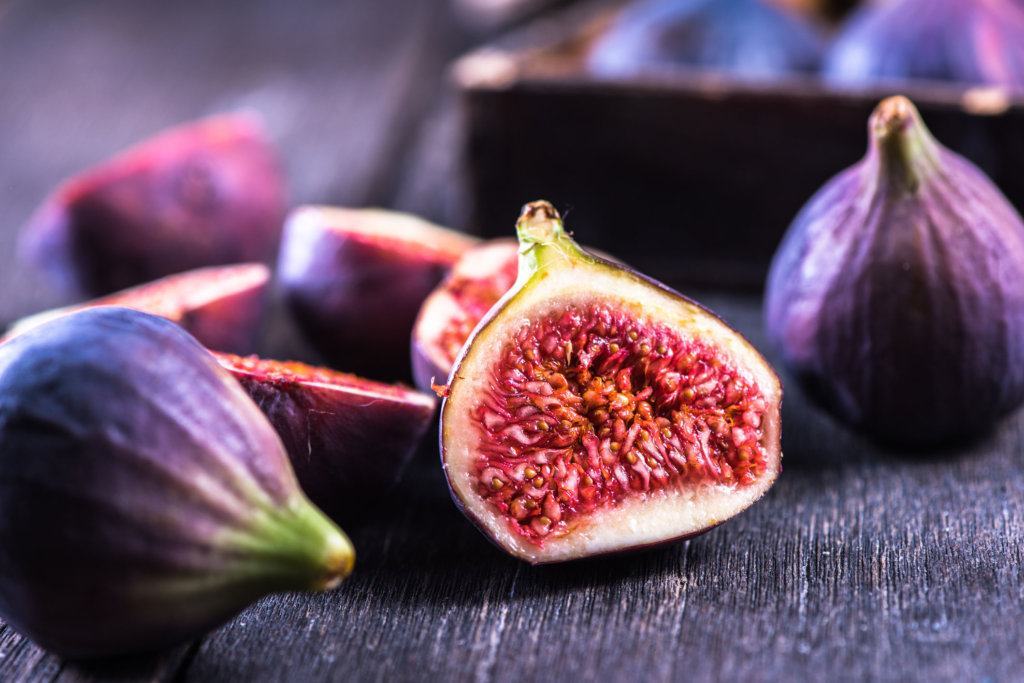
Baby fig makes good
Kitty in Gaithersburg writes:
Your good advice got my baby fig safely through the last winter and now I want to know if I need do anything to help it through this one. No longer a baby, it is now about 6 feet tall and seems very happy. It produced a number of figlets late this summer, which are now the size of large marbles. Since they have no chance of ripening this late, should I remove them, or does it not matter?
I see no benefit in picking them off, Kitty. Although the hours of daylight are getting markedly shorter, the weather is predicted to be unusually warm over the next several months, with lots of sun in the immediate forecast — and we sure as heck are getting plenty of moisture, so give it another month or so. You may get a fig for Christmas!
(Is it just me or does that sound like a great title for a book or one of those Hallmark movies? “Join Marci as she revisits her childhood home and finds ‘A Fig for Christmas.'”)
Should Kitty wrap her tree?
Kitty in Gaithersburg continues:
My 1-year-old fig — now about 6 feet tall — is planted by a wooden fence and near a large yew and some outbuildings that break the prevailing northwest winds. Should I attempt to cover it, mulch its roots heavily, or just leave it alone?
The greater D.C. area is kind of the Mason/Dixon line for figs, Kitty. Go just a bit further South and figs need no winter protection. Go 100 miles to the North and most figs will need to be “wrapped” to survive.
Since yours is still a baby, let’s split the difference. Drive some stakes into the ground about a foot or so outside the tree and wrap burlap around the stakes, not the tree itself. Direct contact with wet, frozen burlap makes plants miserable.
Location, location, location
Have a fig tree in your landscape and wonder if it needs protection?
If you live in the heat sink of the city, your tree will be fine; I see unprotected figs thrive as far north as Philly when they’re planted in a crowded neighborhood — like South Philly — or surrounded by lots of tall buildings, as is the case in Center City.
Outside of the city — be it Philly or D.C.* — it depends a lot on your plant’s location.
If it’s a well-established plant in what we call a “sheltered location” near walls, fencing or plants tall enough to serve as a windbreak, it should be fine.
If the plant is exposed out in the open with no protection from the wind — or if you’ve had significant winter dieback in the past — drive some stakes into the ground around it and wrap burlap around the stakes, not the actual plant. You’re just breaking the wind, not giving it a blankie.
Oh, and whatever you do, don’t use plastic to wrap any plant, and don’t prune it now.
The time for pruning is early in the spring — to remove any areas damaged by winter and to stimulate new growth.
*Sincere congrats to the Washington Nationals! Great baseball — especially in Game 7. A true classic! (But next year, it’ll be the Phillies.)
Get them leaves offa your lawn!
In last week’s Garden Plot, Don in Brunswick and Debbie in Crofton both announced they were doing a late lawn seeding, and the weather since then has been perfect for good germination.
Now they have to deal with any leaves that fall on the new lawn.
New or old, you should never let whole leaves collect on your lawn; they mat down like a tarp and can smother the grass (that’s why you don’t see many low-to-the-ground plants in the woods).
They also breed mold and disease by preventing airflow.
If a blower is the only leaf-moving machine you have, go ahead and use it — just not at 7 a.m. on a Sunday.
But a blower that converts to a leaf vacuum (a “blower/vac”) — as many electric and rechargeable units do — does double duty. These machines shred the leaves as they suck them off your lawn and then deposit the shredded leaves in a shoulder-slung collection bag — providing you with high-quality material for mulch and compost making.
Baby, it’s cold outside
Surprised at how cold it was Friday morning? Well, there’s more of the same coming the next two nights. With a clear sky in the forecast too, that means frost for many and maybe even a freeze for some. (Dense cloud cover keeps ground temps higher and can often prevent frost. Same with wind. Cold, clear and calm = frost.)
So bring in any house plants still outside; hose them down with sharp streams of water first to knock off any hitchhiking pests.
If you have tender summer bulbs such as dahlias and tuberous begonias in the ground, wait until they experience a frost or two (to concentrate their sugars in their root systems), then either dig them up and store them indoors, or mulch them heavily (leave the above ground growth intact) with shredded leaves or pine straw, but no wood mulch of any kind.
And hide the pruners if you have a “helpful” spouse. Pruning at this time of year always causes significant stress and sometimes even death to the poor pruned plants.
Mike McGrath was editor-in-chief of ORGANIC GARDENING magazine from 1990 through 1997. He has been the host of the nationally syndicated public radio show “You Bet Your Garden” since 1998 and WTOP Garden Editor since 1999. Send him your garden or pest control questions at MikeMcG@PTD.net.







